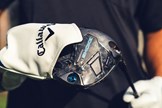Callaway Paradym Ai-Smoke Max D Driver Review
Last updated:
-
At a glance
- TG Rating
- Owner Rating
-
Pros
- The new Smart Face concept is a really clever idea to tailor a driver more to your game.
- With four models to choose between, there's a driver solution in the Ai-Smoke family for everyone.
- Some clever topline shaping means the face doesn't look massively closed at address.
-
Cons
- This is one of the most costly drivers on the market.
What we say...
The draw-biased Callaway Paradym Ai-Smoke Max D driver is said to be sweeter no matter where shots hit the face. My review finds out if it delivers.
Whether we like it or not, Artificial Intelligence is playing an increasing role in our everyday lives. AI powers virtual assistants, medical diagnosis, driverless cars, annoying online chatbots, and lots more. But, when it comes to golf, Callaway is absolutely determined to lead the way when it comes to designing clubs using AI. So much so that the design behind the Callaway Paradym Ai-Smoke Max D driver wouldn’t be possible without it.
The company has put in years of work building knowledge to harness the power of AI to create some of the best golf drivers available, which they say will help golfers hit drivers further and straighter than ever before. Here’s how…
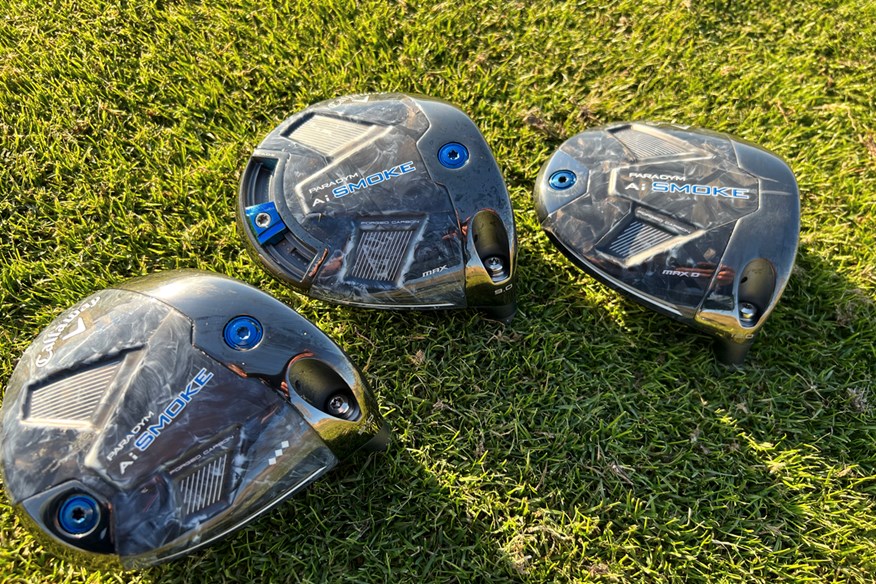
The background
Callaway has been doing AI for 15 years
With other golf brands batting around how they use AI to design golf clubs, Callaway is quick to point out they’ve got more pedigree than the competition. The company bought its first super-computer back in 2009. Yet it took 10 years before the Epic Flash launched in 2019. The first commercially manufactured golf product designed by AI.
This spells out how it’s impossible to just go to a local tech shop, buy a super-computer off the rack, start it up, and set it free designing drivers. With 120 people in Callaway’s R&D team and a dedicated Artificial Intelligence team assembled from outside golf, nobody in the game is more focused on writing lines of custom code to harness AI into designing better-performing golf products.
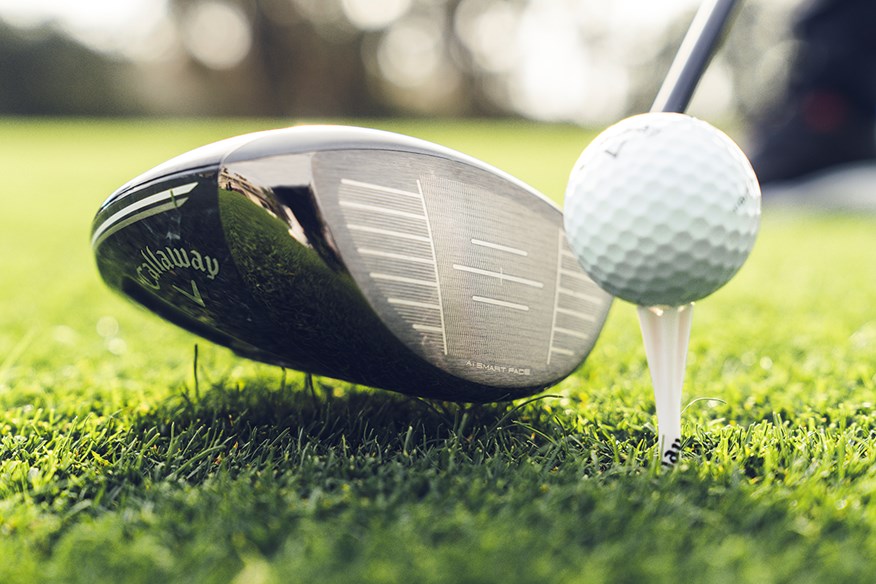
Sweeter from every spot
The previous Paradym driver was a massive success. It won countless events in the hands of Jon Rahm, Sam Burns, Xander Schauffele, and Rose Zhang. Club golfers bought it in their droves too. The model represented a huge shift in how the company designs drivers, incorporating a full 360 carbon fiber chassis, hence the ‘Paradym’ name.
However, Callaway’s super-computer-driven AI has got so good, that the company can legally claim the AI-Smoke drivers are 7 yards longer than their predecessors. And that data’s measured from 21 different spots across the face, not nine like the industry standard, which is staggering gains within a single generation.
How have they done it? Well, it all comes down to the most sophisticated driver face ever made, the super new Ai- Smart Face.
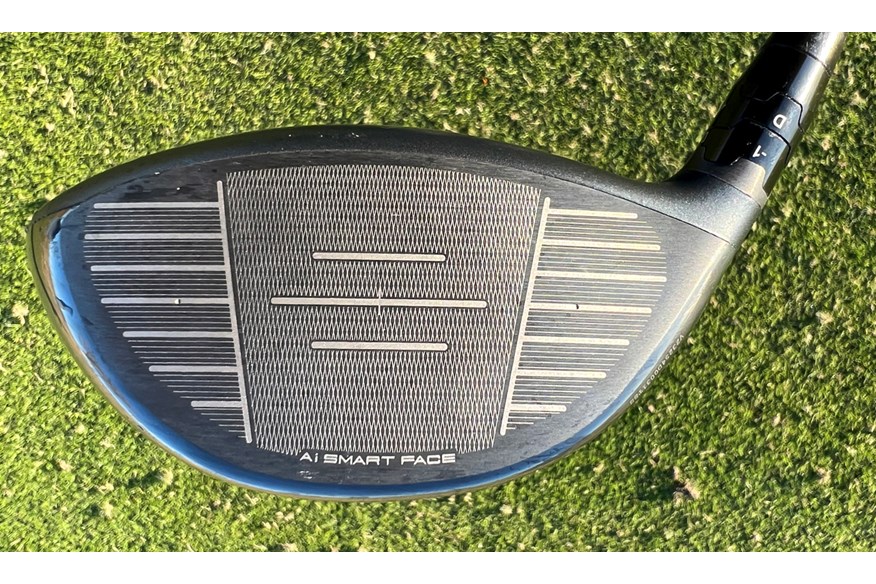
Everything you need to know about the Ai-Smart Face within the Callaway Paradym Ai-Smoke Max D driver
Swing Code has been developed from real player data
Typically drivers are designed using R&D robots, in a static environment. This means new designs are hit in different locations across the face and engineers study the results. Using a robot means there’s no opportunity to factor in how various categories of golfers deliver the club differently at impact.
What sets the Callaway Paradym Ai-Smoke Max D driver apart, then, is how it’s been optimized using real golfer swings.
Callaway says they’ve mapped 250,000 tour pro and consumer swings across the world because real golfers don’t swing like robots. The project has given the company over a million data points to feed into the super-computer, a move that better optimizes each of the four Paradym Ai-Smoke drivers for their intended audience.
Traditionally, drivers are designed using five to eight different face iterations, before the best is selected for production. Thanks to artificial intelligence, the new Ai-Smoke models benefit from 50,000 electronic prototypes. Plus, thanks to the hours of real-world research, the Callaway Paradym Ai-Smoke Max D driver is more tailored to the typical speed, club path, and impact location of its intended audience.
Micro trampolines
We’ve all heard how modern variable thickness driver faces act like trampolines and slingshot shots off faster and further than flat faces used to decades ago. It’s mind-blowing though that Callaway says the new Ai-Smart Face contains smaller areas that act like micro-trampolines. The idea is each counteracts a miss of the typical golfer who’ll use each of the four Ai Smoke driver models, which is really clever thinking.
Just to be clear this is not a bulge and roll story like TaylorMade’s TwistFace. It’s about changing the launch and spin of shots through the design and contouring of the face.
The idea has a big impact on down-range dispersion and means heel shots generate less cut spin, so the ball goes less far right (for a right-hander) and benefit from additional yardage. Where low spin shots hit high on the toe are less likely to fall out of the sky and draw less. Hence the ‘sweeter from every spot’ tagline.

What’s the benefit of Swing Code?
Swing Code is a whole new way to design driver faces. Callaway is the first to take this approach of designing individual faces for different types of golfers. But how much can it help you play better golf?
Well, Callaway says it’s all about the number of times they can run their designs through the super-computer, as each time there’s an improvement in speed or dispersion from somewhere on the face. Until a point when gains become virtually non-existent for that particular model.
Having the computer model 5,000 different faces, dispersion stood at 85.29 sq yards. At 10,000, that dropped to 68.33 sq yds, while at 50,000 iterations the number incredibly narrowed to 33.89 sq yds. This means the power of AI has cut dispersion by almost one-third.
Spelling out plain and simple why computer modeling completely outstrips humans. As it would have taken humans 10 years to make thousands of driver face iterations, and even then nobody would have dreamt up what the super-computer has.
Video: How does the Callaway Paradym AI Smoke Max D compare to other draw drivers?
Which Ai-Smoke driver will suit you?
Callaway hasn’t just studied the impact point of where different abilities of golfers impact shots on the face, they’ve considered attack angle, club path, and speed too. Here’s how to break down where your driver game fits.

Callaway Paradym Ai-Smoke Max D and Max Fast driver
These golfers typically, but not always, swing driver between 75 and 90 mph, which is considered slow to average. Shots are likely to be sprayed from low heel to high toe and the attack angle will be down onto the back of the ball, with an out-to-in swing path.
Those needing the most help with fighting a slice should gravitate toward the Max D, whereas those needing additional speed should explore the Max Fast.
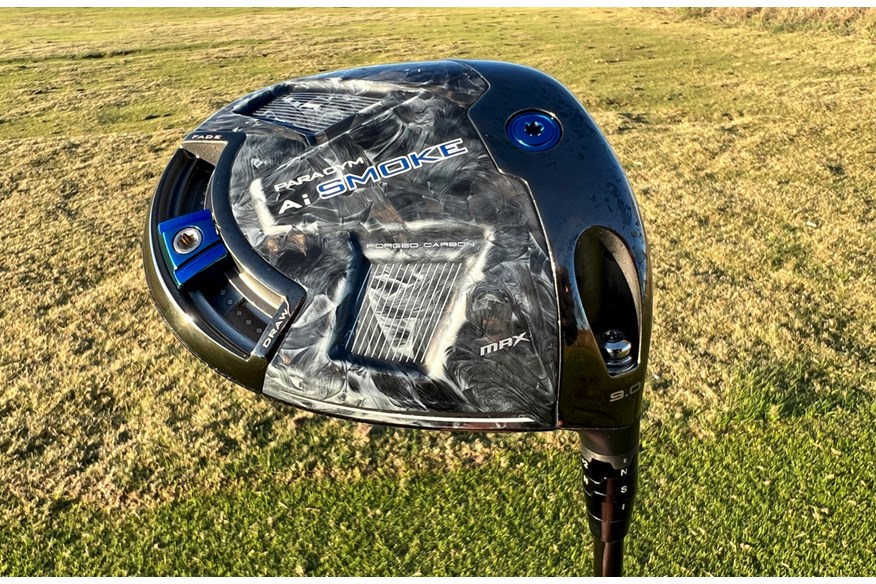
Callaway Paradym Ai-Smoke Max driver
The Max is Callaway’s core driver model, aimed at the majority of golfers. Those best suited to this set-up are likely to have an impact location a little higher on the face than Max D and Max Fast players. Shots are likely to be grouped a little more tightly on the face too.
Attack angles are likely to be a fraction down to a little up and the target player will generate mid-speed (90 – 100 mph). Possibly they’ll also have a fade rather than a slice as a stock shot.
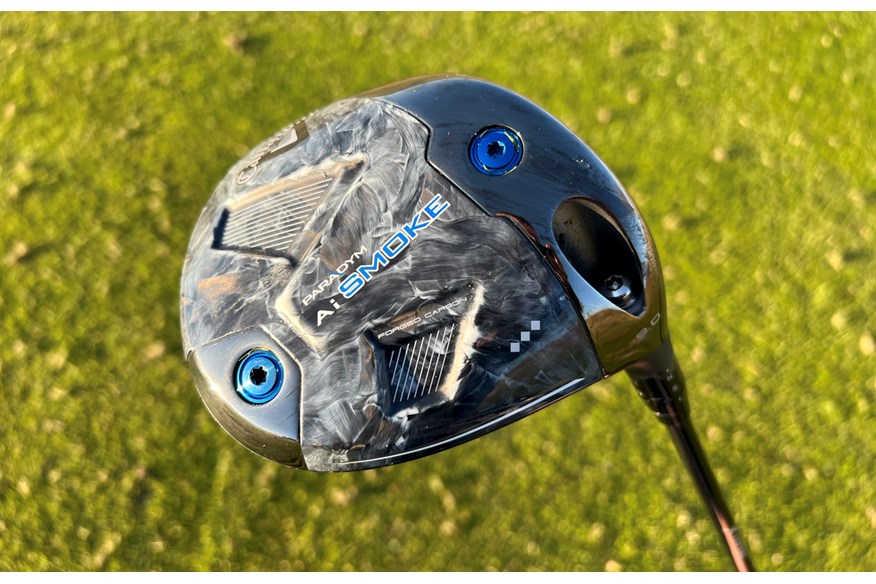
Callaway Paradym Ai Smoke Triple Diamond driver
Triple Diamond golfers are likely to have a higher swing speed of 105 – 120+ mph and shots are much more likely to be grouped tightly around the center of the face. The attack angle should be up onto the back of the ball and players will generally have a much more neutral path.
Everything you need to know about the Callaway Paradym Ai-Smoke Max D driver
RRP: $599.99 / £569
Lofts: 9° / 10.5° / 12°
The Max D is the most draw-biased Ai-Smoke driver, and it replaces the previous Paradym X. Expect the model to hit 9 yards further left than last year’s set-up, which is also further left than setting the Max head up with the sole weight in the draw position. The Max D is highly likely to feature amongst the best draw drivers of the year.
Expect a slightly lower MOI than the Callaway Paradym Ai-Smoke Max head, so only explore this model if a slice is your downfall. If you’re just inconsistent it could be the higher MOI Max might be a better option.
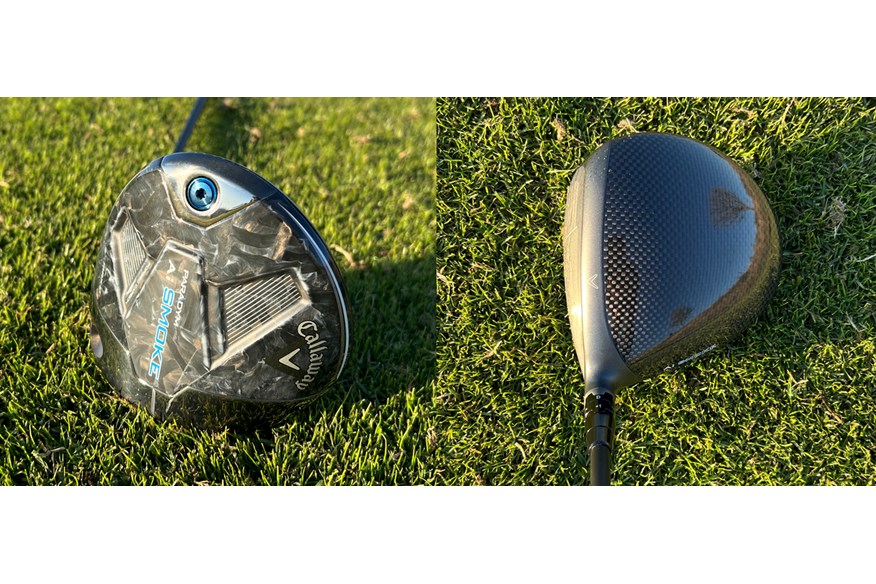
Typical player traits
Swing Speed: Slower (75 – 90 MPH)
Impact location: Low heel – high toe
Attack angle: Downward
Club path: Out to in
Verdict: Callaway Paradym Ai Smoke Max D driver
Big brand drivers have come a very long way in just a few short years, and it’s models like the Ai Smoke Max D that are pushing driver design to the limit thanks to not having a titanium chassis inside. Put them alongside full titanium models like the Ping G430 SFT and it’s easy to spot which is more technically advanced and tougher to produce. It’s not just technology though where draw drivers have advanced, the Max D looks so much better than draw drivers from yesteryear too.
I love how Callaway’s engineers have craftily played with the optics of the Max D face so it doesn’t look stupidly closed, or point too left of the target at address. You do though get the impression it’s primed and ready to slight shots from right to left for you.
I really enjoyed hitting this model and my data with it wasn’t half bad either. With just a single yard between it and my longest driver (the PXG 0311 XF GEN6) there’s little to choose between them as I know the data could be reversed on another test day. What really sticks out though in a year when MOI is the hot topic the Max D somehow managed to group shots into my smallest shot area – 143 SQ YDS.
With an AI Smart face optimized for low heel-to-high-toe strikes, I feel like the Max D has mine and many other club golfers’ misses covered. A cracking draw bias driver option in 2024.
Data Comparison: How does the Callaway Paradym Ai Smoke Max D driver compare to competitor models?
I put the Callaway Paradym Ai Smoke Max D up against leading competitor draw drivers at Woodhall Spa Golf Club. My test data below shows how the nine models compare.
| Driver | Ball Speed | Launch Angle | Backspin | Height | Descent Angle | Carry Distance | Shot Area |
| PXG 0311 GEN6 XF | 120 MPH | 12º | 2563 RPM | 21 YDS | 30.9º | 211 YDS | 196.4 SQ YDS (3) |
| TaylorMade Qi10 Max (9º) | 121 MPH | 12º | 2650 RPM | 19 YDS | 34.4º | 210 YDS | 325.7 SQ YDS |
| Callaway Paradym Ai Smoke Max D | 119.9 MPH | 14.9º | 2517 RPM | 25 YDS | 37.1º | 210 YDS | 143 SQ YDS (1) |
| Cleveland Launcher XL 2 Draw | 119.5 MPH | 12.7º | 2495 RPM | 21 YDS | 32.4º | 208 YDS | 564 SQ YDS |
| Ping G430 SFT | 118.9 MPH | 14.9º | 2760 RPM | 24 YDS | 36.4º | 206 YDS | 278.4 SQ YDS |
| Cobra Darkspeed Max | 119.1 MPH | 11.8º | 2579 RPM | 26 YDS | 36.8º | 205 YDS | 299.6 SQ YDS |
| Inesis 500 HL | 117 MPH | 16.3º | 2849 RPM | 28 YDS | 40.6º | 203 YDS | 515.2 SQ YDS |
| Yonex Ezone Elite 4 | 117.9 MPH | 13.9º | 3026 RPM | 24 YDS | 37.8º | 202 YDS | 342 SQ YDS |
| Cobra Air X | 118.9 MPH | 14.4º | 2507 RPM | 26 YDS | 38.6º | 201 YDS | 645.3 SQ YDS |
| AVERAGE | 119.2 MPH | 13.5º | 2657 RPM | 23.4 YDS | 36.1º | 206.4 YDS | 347.7 SQ YDS |
*All lofts at 10.5º unless otherwise stated.
Still not sure which Paradym Ai-Smoke driver is best for you? Check out our full breakdown of what each model offers.
BECOME A TODAY’S GOLFER MEMBER: Unlimited access to premium content and exclusive rewards!
About the author

Simon Daddow – Today’s Golfer Equipment Editor
Simon Daddow is the Equipment Editor for Today’s Golfer. Having tested and played more than 10,000 clubs in his life, what he doesn’t know about golf clubs isn’t worth knowing.
He joined EMAP Active (now Bauer Media) as Equipment Editor in 2006 and has worked for both Today’s Golfer and Golf World. Working alongside our test pro Neil Wain, Simon has made todays-golfer.com the most reliable source for golf club testing.
Despite his youthful looks, Simon has played golf for more than 40 years and plays to a handicap of 10. A lack of club speed means he’s short off the tee, but very handy from 125 yards and in.
Simon’s job means he plays regularly around the world, and rates Kingsbarns as his favorite course. He uses a PXG 0311 GEN6 XF driver, TaylorMade Stealth 2 HL (15º), Ping G400 (20.5º), PXG 0317 X Gen2 hybrid, PXG 0311 GEN6 P irons (6–PW), Cleveland CBX2 wedges (52°, 58°), Ping 21 Fetch putter and a TaylorMade Tour Response golf ball.
You can contact Simon via email and follow him on Twitter for loads more golf equipment insight.





